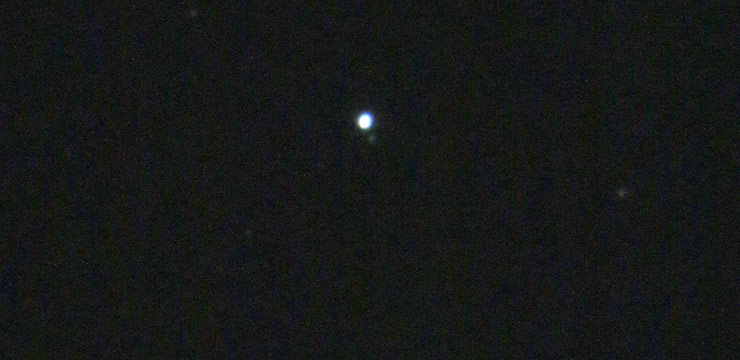
Observing Neptune in 2016
September 2016 :
With an orbital period of 165 years, Neptune returns to our skies only about two days later each subsequent year. As has been for the past five years, the rising of Aquarius brings with it our solar system’s farthest planet. It will reside in the constellation representing the water-bearer until the year 2023.
Neptune reaches opposition on September 2, but because of it’s great relative distance at 30 astronomical units from the Sun, it isn’t as prominently larger or brighter at opposition that at any other time of the year like the other superior planets. Neptune’s diminutive 2.4 arcsecond blue-hued globe reveals little detail in even the largest telescopes, and at magnitude 7.8 it requires at least 7x50 binoculars to track down visually.
Due to its great distance, Neptune is the least observed planet, and is therefore the most rewarding to hunt down.
Throughout 2016, Neptune is fairly easy to locate as it lies within three degrees of 3.7 magnitude gamma Aquarii. Use the chart to locate Neptune to the southwest of theis star.
Once you locate Neptune, try to observe it on subsequent nights, making note of its position among the background stars. If you have a telescope of 10 inches or larger apertre, you may be able to locate its largest moon Triton. Triton orbits Neptune in a highly inclined, retrograde orbit that extends as far as 17 arcseconds from the planet. It shines 200 times dimmer than Neptune at 14th magnitude , making it a bit of a challenge to spot. Using a camera on a telescope as small as 6 inches will easily reveal its presence. None of Neptune’s 13 satellites are accessible in amateur telescopes, although it may be possible to detect Nereid photographically through very large telescopes.
Our Moon will be positioned near Neptune on September 15 and again on October 12.
Good luck hunting Neptune, and let us know if you're able to see Triton.



